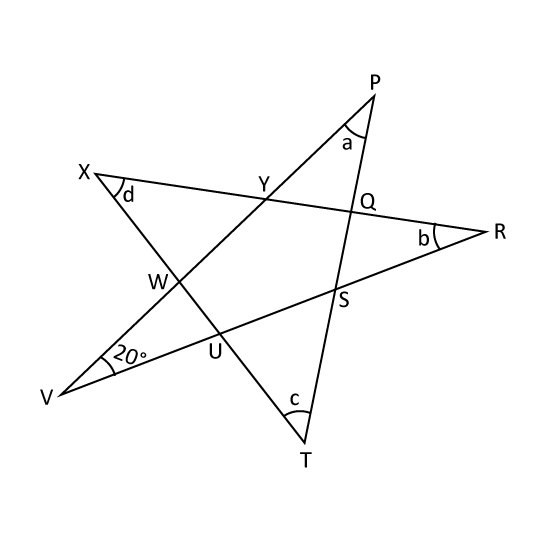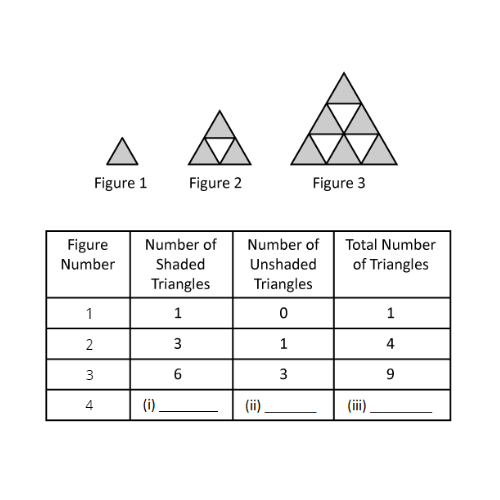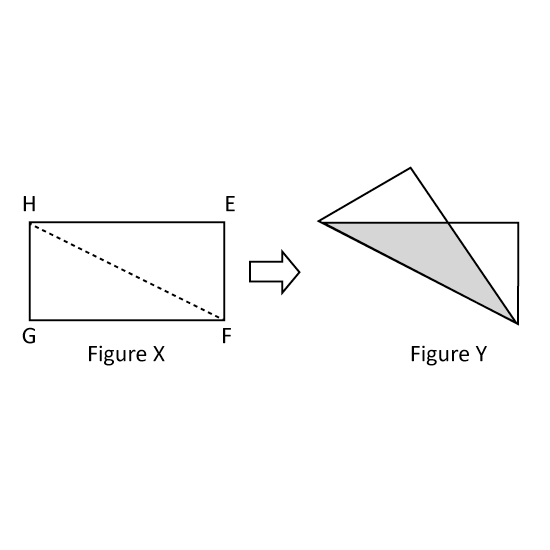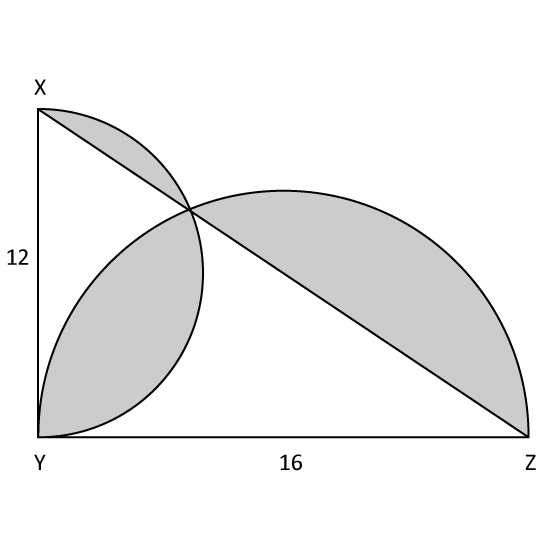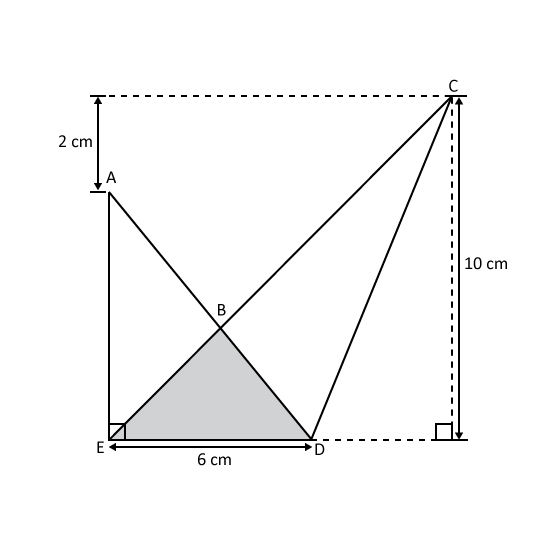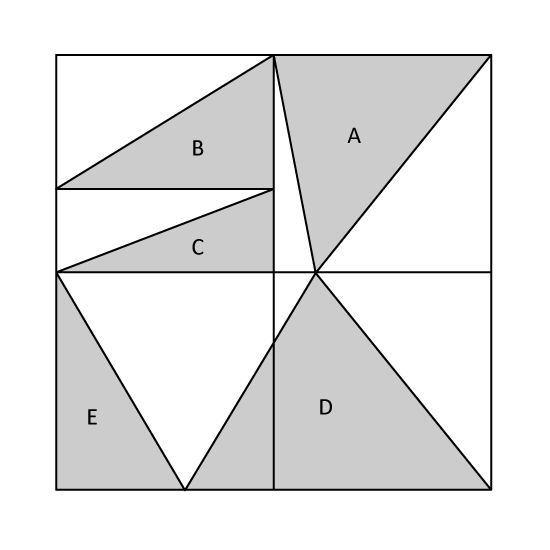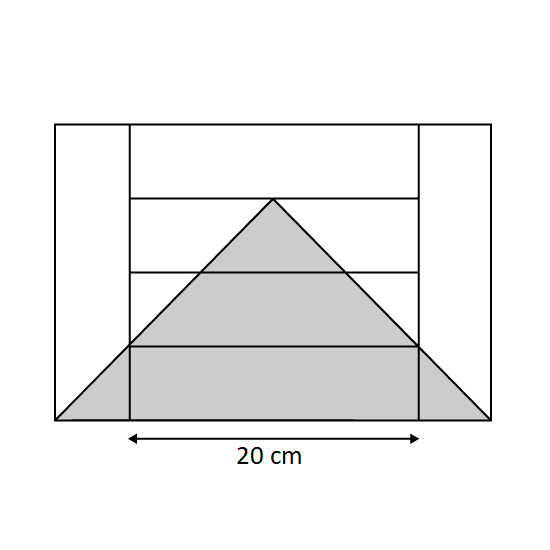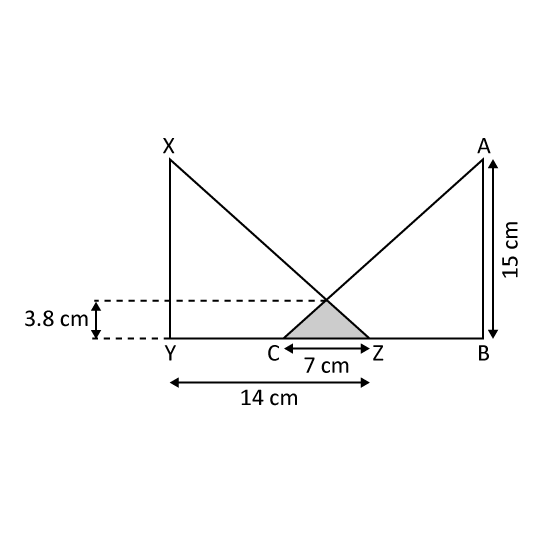Level 3
In the figure, PQST, PYWV, RQYX, XWUT and RSUV are straight lines. Find the value of ∠a + ∠b + ∠c + ∠d.
Level 3
In the figure, PQST, PYWV, RQYX, XWUT and RSUV are straight lines. Find the value of ∠a + ∠b + ∠c + ∠d.
Image in this question is not available.
Level 3 The diagram shows a sequence of patterns formed by identical triangles.
Find the values of (i), (ii) and (ii). Give your answers in the following format. (Eg 1, 2, 3)
- A figure in the pattern has a total of 169 triangles. What is the Figure Number?
- Another figure has 50 more shaded triangles than unshaded triangles. What is the total number of triangles in this figure?
Level 3 The diagram shows a sequence of patterns formed by identical triangles.
Find the values of (i), (ii) and (ii). Give your answers in the following format. (Eg 1, 2, 3)
- A figure in the pattern has a total of 169 triangles. What is the Figure Number?
- Another figure has 50 more shaded triangles than unshaded triangles. What is the total number of triangles in this figure?
Image in this question is not available.
Level 3
Figure 1 shows a rectangle EFGH. It is folded along EG to form Figure 2. The area of Figure 2 is 58 of the area of Figure 1. The area of the shaded part in Figure 2 is 36 cm2. Find the area of rectangle EFGH.
Level 3
Figure 1 shows a rectangle EFGH. It is folded along EG to form Figure 2. The area of Figure 2 is 58 of the area of Figure 1. The area of the shaded part in Figure 2 is 36 cm2. Find the area of rectangle EFGH.
Image in this question is not available.
Level 3
In the figure, not drawn to scale, XYZ is a right-angled triangle. XY is 12 cm, YZ is 16 cm. Find the area of the shaded parts. (Take π = 3.14 )
Level 3
In the figure, not drawn to scale, XYZ is a right-angled triangle. XY is 12 cm, YZ is 16 cm. Find the area of the shaded parts. (Take π = 3.14 )
Image in this question is not available.
Level 3
Figure ABCDE has an area of 36 cm
2. ADE and CDE are triangles.
- Find the area of the triangle ADE.
- Find the area of the shaded part.
Level 3
Figure ABCDE has an area of 36 cm
2. ADE and CDE are triangles.
- Find the area of the triangle ADE.
- Find the area of the shaded part.
Image in this question is not available.
Level 3
The figure, not drawn to scale, is made up of 2 triangles, AGH and EGH. AB is 12 of EF. CD is 23 of AB and the difference between EF and CD is 12 cm. Given that HG = 10 cm, find the area of the entire figure.
Level 3
The figure, not drawn to scale, is made up of 2 triangles, AGH and EGH. AB is 12 of EF. CD is 23 of AB and the difference between EF and CD is 12 cm. Given that HG = 10 cm, find the area of the entire figure.
Image in this question is not available.
Level 3
Find the total area of the shaded parts.
Level 3
Find the total area of the shaded parts.
Image in this question is not available.
Level 3
The figure is made up of four identical squares of sides 18 cm. Find the total area of the figure that is shaded.
Level 3
The figure is made up of four identical squares of sides 18 cm. Find the total area of the figure that is shaded.
Image in this question is not available.
Level 3
The figure is made up of 6 similar rectangles of length 20 cm. Find the area of the shaded parts.
Level 3
The figure is made up of 6 similar rectangles of length 20 cm. Find the area of the shaded parts.
Image in this question is not available.
Level 3
Two identical triangles, ABC and XYZ, overlap each other as shown. Given that AB = XY = 15 cm and BC = YZ = 14 cm, what is the area of the figure that is not shaded?
Level 3
Two identical triangles, ABC and XYZ, overlap each other as shown. Given that AB = XY = 15 cm and BC = YZ = 14 cm, what is the area of the figure that is not shaded?
Image in this question is not available.
